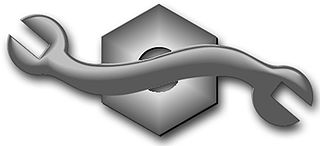| Utilitiesman | |
|---|---|
 Rating insignia | |
| Issued by | United States Navy |
| Type | Enlisted rating |
| Abbreviation | UT |
| Specialty | Construction |
Utilitiesman (abbreviated as UT) is a United States Navy occupational rating.

The United States Navy (USN) is the naval warfare service branch of the United States Armed Forces and one of the seven uniformed services of the United States. It is the largest and most capable navy in the world and it has been estimated that in terms of tonnage of its active battle fleet alone, it is larger than the next 13 navies combined, which includes 11 U.S. allies or partner nations. It has the highest combined battle fleet tonnage and the world's largest aircraft carrier fleet, with eleven in service, and two new carriers under construction. With 336,978 personnel on active duty and 101,583 in the Ready Reserve, the U.S. Navy is the third largest of the U.S. military service branches in terms of personnel. It has 290 deployable combat vessels and more than 3,700 operational aircraft as of June 2019, making it the third-largest air force in the world, after the United States Air Force and the United States Army.

In a navy, a rate, rating or bluejacket is a junior enlisted member of that navy who is not a warrant officer or commissioned officer. Depending on the country and navy that uses it, the exact term and the range of ranks that it refers to may vary.
Utilitiesmen plan, supervise and perform tasks involved in installation, maintenance and repair of plumbing, heating, steam, compressed air, fuel storage and distribution systems, water treatment and distribution systems, air conditioning and refrigeration equipment, systems, as prescribed by drawings and specifications; schedule and evaluate installation and operational tasks; prepare records and reports; maintain individual combat readiness; and perform tasks required in combat and disaster preparedness or recovery operations. [1]

Plumbing is any system that conveys fluids for a wide range of applications. Plumbing uses pipes, valves, plumbing fixtures, tanks, and other apparatuses to convey fluids. Heating and cooling (HVAC), waste removal, and potable water delivery are among the most common uses for plumbing, but it is not limited to these applications. The word derives from the Latin for lead, plumbum, as the first effective pipes used in the Roman era were lead pipes.

Steam is water in the gas phase, which is formed when water boils or evaporates. Steam is invisible; however, "steam" often refers to wet steam, the visible mist or aerosol of water droplets formed as this water vapour condenses. At lower pressures, such as in the upper atmosphere or at the top of high mountains, water boils at a lower temperature than the nominal 100 °C (212 °F) at standard pressure. If heated further it becomes superheated steam.
Compressed air is air kept under a pressure that is greater than atmospheric pressure. Compressed air is an important medium for transfer of energy in industrial processes. Compressed air is used for power tools such as air hammers, drills, wrenches and others. Compressed air is used to atomize paint, to operate air cylinders for automation, and can also be used to propel vehicles. Brakes applied by compressed air made large railway trains safer and more efficient to operate. Compressed air brakes are also found on large highway vehicles.
At the master chief petty officer level, utilitiesman merges with the construction electrician rating to become a master chief utilitiesman (UCCM).
Master chief petty officer (MCPO) is the ninth, and highest, enlisted rank in the United States Navy and United States Coast Guard, just above senior chief petty officer (SCPO). Master chief petty officers are addressed as "Master Chief " in the colloquial and they constitute the top 1.25% of the enlisted members of the maritime forces.










